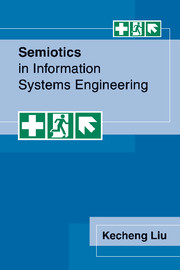Appendix B - LEGOL applications in the CRIS case
Published online by Cambridge University Press: 19 September 2009
Summary
The CRIS case was invented by IFIP (the International Federation for Information Processing) for the comparative review of information systems design methodologies. The case definition can be found in Information Systems Design Methodologies (Olle et al. 1982).
In this appendix, the CRIS case is studied using the method of Semantic Analysis which results in an ontology chart (Figure B.1). In order to test LEGOL language and the interpreter, questions are made and then translated into LEGOL expressions. The LEGOL statements were executed by the LEGOL interpreter, a part of an early prototype of the Normbase run on a VAX station, and the results were produced based on some imaginary data stored in the Normbase. Section B.1 contains some questions and the LEGOL statements, and section B.2 presents the corresponding output from the Normbase version.
Questions and LEGOL statements
In this section, there are questions concerning the CRIS case, and statements in LEGOL that will produce the answers, printed below each question.
(1) What are the Technical Committees of the various learned societies on our records?
TC
(2) Who are the current member organizations of IFIP?
current membership (national-org, IFIP)
(3) What Working Groups now exist?
WG
or
WG (TC)
(4) When was WG8.1 started?
start-of WG# “WG8.1”
(5) Which are the newly created Working Groups after 1980?
start-of WG after @1980
or
start-of WG after start-of WG# “WG8.1”
(Note: the ‘at sign’ (i.e. @) is an ad hoc solution for making that version of the compiler distinguish what after the ‘at sign’ will be a number for ‘year’.)
Information
- Type
- Chapter
- Information
- Semiotics in Information Systems Engineering , pp. 201 - 207Publisher: Cambridge University PressPrint publication year: 2000
